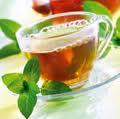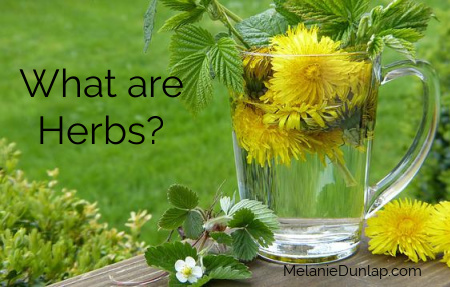Ask the average person to define herbs and he or she will probably tell you that herbs are green leaves that may have some medicinal properties. Some may even add that herbs like Thyme and Sage are used for cooking. This is how most people define herbs, which is quite good knowledge considering that the majority of people don’t use herbs in their own lives.
The dictionary defines an herb as 1) Any plant with leaves, seeds or flowers used for flavoring, food, medicine or perfume. 2) Any seed-bearing plant that does not have a woody stem and dies down to the ground after flowering.
An herbalist defines an herb as any part of a plant such as seeds, berries, roots, leaves, bark or flowers, used for medicinal purposes.
Culinary herbs are mostly non-woody and soft. Used for their aromatic flavor and texture, some culinary herbs include bay leaf, basil, chervil, oregano, parsley, rosemary, sage, tarragon and thyme. In almost all cases, culinary herbs also have a medicinal use.
The world of medicinal herbs is even more diverse and surprising. Even the most innocuous looking leaf blade may possess a treasure trove of medicinal properties. Herbalism, or Phytotherapy, is the practice that aims to treat dis-eases in the body using plants and the active constituents found within them.
This resurgence of interest in herbs was brought about by various systems of holistic healing. Now, more than ever before, people are beginning to realize that good health does not refer to an absence of disease. Rather, it is a balance of physical, mental, emotional and social wellness. Herbal health care is becoming increasingly popular because herbs provide natural stimulants that activate the body’s own defense mechanisms.
When To Use Herbs
- to nourish, tone and strengthen the body
- preventatively to keep the body in state of wellness/balance
- for acute conditions (under a practitioner’s care, ideally)
- for chronic conditions
- to rebuild body after illness or other major stresses (i.e. surgery)
- to compliment other healing modalities either allopathic or holistic
Due to our sedentary lifestyle, processed foods and industrial advances, we have managed to discover a large number of chronic illnesses that were virtually unknown in the past. Medicines used to treat these diseases have side effects. In time, these medicines also become ineffective as the human body develops a resistance to the medicine. After battling it out for many years, practitioners of conventional medicine are finally willing to admit that herbal extracts are an effective source of healing.
Herbal medicines provide a healing system that is in tune with nature. Herbs are efficient, cost effective and unlike pharmaceutical drugs, don’t require a list of possible side effects as long as your arm.
Using herbal medicines requires us to be involved in our own healing. They ask us to be patient and give ourselves time to heal. The aim of herbs is to bring the body back into balance so that there is no longer any need for medicine.
Some interesting uses of herbs are:

– Chamomile tea reduces the stress response and calms the nervous system
– Peppermint tea after a meal helps the digestion
– Valerian root can be used to treat insomnia (and it smells like dirty feet)
–Garlic can increase your resistance to flu and colds
– Feverfew is an herb that if taken consistently and in the right preparation, can reduce the frequency of migraines.
Use Quality Herbs
It is both a blessing and a disservice that herbs are so readily available to us in this day and age. A blessing because herbs really are the people’s medicine, a disservice because there is so much misinformation. If you are going to use herbs as medicine, then you must use quality herbs.
Dried herbs should look, taste, smell almost exactly as they do when they are fresh. And they should be effective. Here are the main guidelines for determining high quality herbs: (this works for fresh herbs, too)
COLOR: The herb should retain the same color as when it was fresh with very little color variation. Leaves should be vivid, bright and alive looking. Blossoms or flowers should retain almost the same color as when fresh. Roots generally are not as colorful as leaves or blossoms, but they should retain their original color, as well.
SMELL: Herbs have distinctive odors that are effective means to determine quality. Smell your herbs before purchasing them. They should smell strongly, not necessarily good. Good quality valerian should smell like really dirty socks; good quality peppermint will make your nose start to run and eyes sting; and good quality nettles just smell “green”.
TASTE: Herbs should have a distinctive, fresh favor. You want to judge them on the potency of flavor. Here are some questions you can ask yourself – do they taste fresh? strong? vital? distinctive? are your taste buds tingling?
The use of herbs for better health can be overwhelming. There is so much to know, which herb to use, what type of preparation, drug interactions, dosage and quality are just a few of the things you need to be sure about. I recommend you consult a natural health practitioner as a guide on your journey with the healing plants.
Are you looking for guidance with herbs or other natural health questions? Click Here to book a discovery call with Dr. Melanie Dunlap! A free opportunity to get answers from an experienced herbalist!
